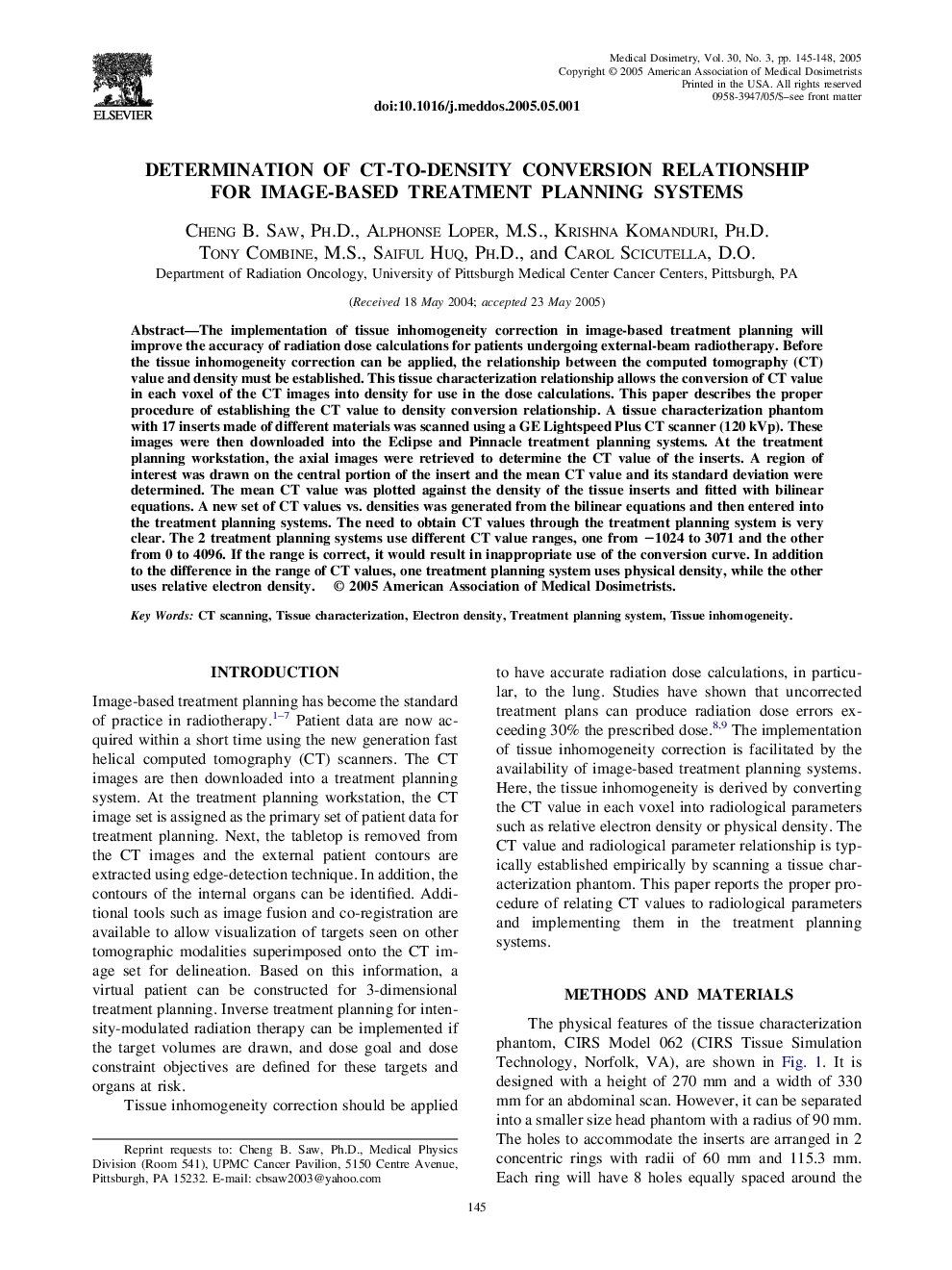| Article ID | Journal | Published Year | Pages | File Type |
|---|---|---|---|---|
| 10730960 | Medical Dosimetry | 2005 | 4 Pages |
Abstract
The implementation of tissue inhomogeneity correction in image-based treatment planning will improve the accuracy of radiation dose calculations for patients undergoing external-beam radiotherapy. Before the tissue inhomogeneity correction can be applied, the relationship between the computed tomography (CT) value and density must be established. This tissue characterization relationship allows the conversion of CT value in each voxel of the CT images into density for use in the dose calculations. This paper describes the proper procedure of establishing the CT value to density conversion relationship. A tissue characterization phantom with 17 inserts made of different materials was scanned using a GE Lightspeed Plus CT scanner (120 kVp). These images were then downloaded into the Eclipse and Pinnacle treatment planning systems. At the treatment planning workstation, the axial images were retrieved to determine the CT value of the inserts. A region of interest was drawn on the central portion of the insert and the mean CT value and its standard deviation were determined. The mean CT value was plotted against the density of the tissue inserts and fitted with bilinear equations. A new set of CT values vs. densities was generated from the bilinear equations and then entered into the treatment planning systems. The need to obtain CT values through the treatment planning system is very clear. The 2 treatment planning systems use different CT value ranges, one from â1024 to 3071 and the other from 0 to 4096. If the range is correct, it would result in inappropriate use of the conversion curve. In addition to the difference in the range of CT values, one treatment planning system uses physical density, while the other uses relative electron density.
Keywords
Related Topics
Physical Sciences and Engineering
Physics and Astronomy
Radiation
Authors
Cheng B. Ph.D., Alphonse M.S., Krishna Ph.D., Tony M.S., Saiful Ph.D., Carol D.O.,
